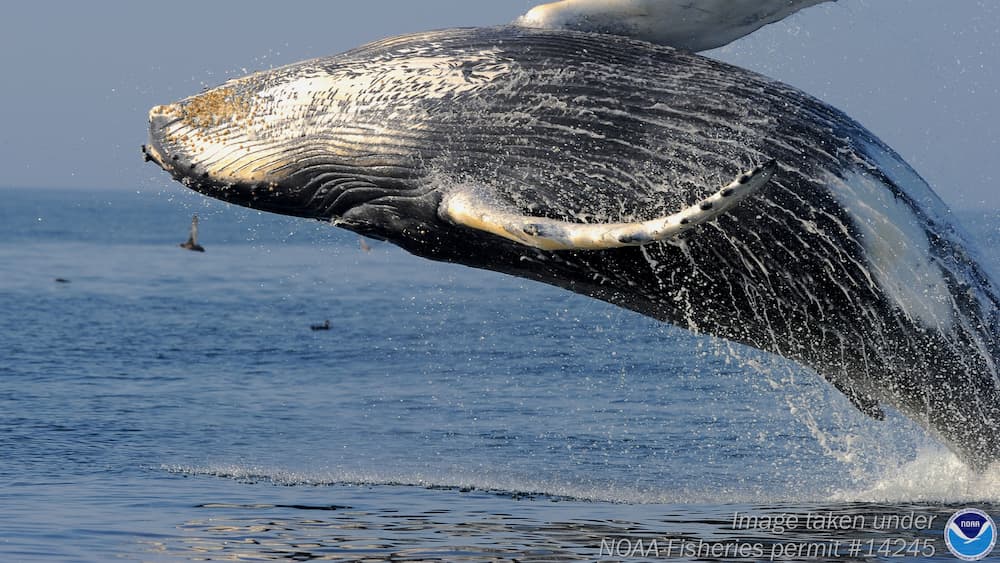
Humpback whales exhibit a variety of behaviors that we can observe at the surface. Other whale species may show similar behaviors. Here is a quick review on what you may see during a whale watch.
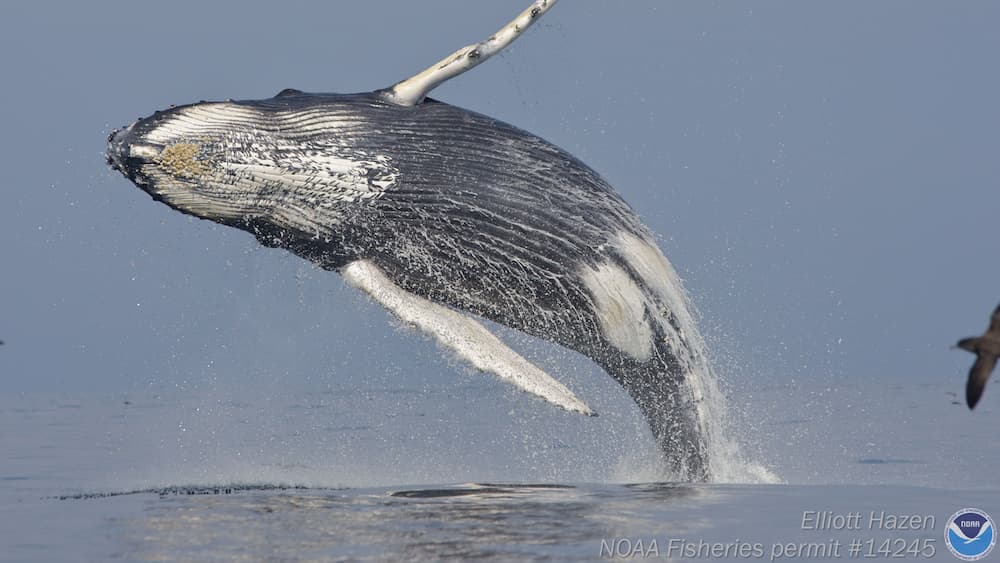
A breach is when a whale propels its body out of the water. If more than half the body appears, it is considered a full breach. If half or less of the body appears, it is a half breach. The whale may spin in either a clockwise or counterclockwise direction, or the whale may choose to do a non-spinning breach, where it lands on its back or side. A chin-slap breach involves a vertical movement with a landing on the throat/belly. A whale may also propel the lower part of its body and tail out of the water in a tail breach.
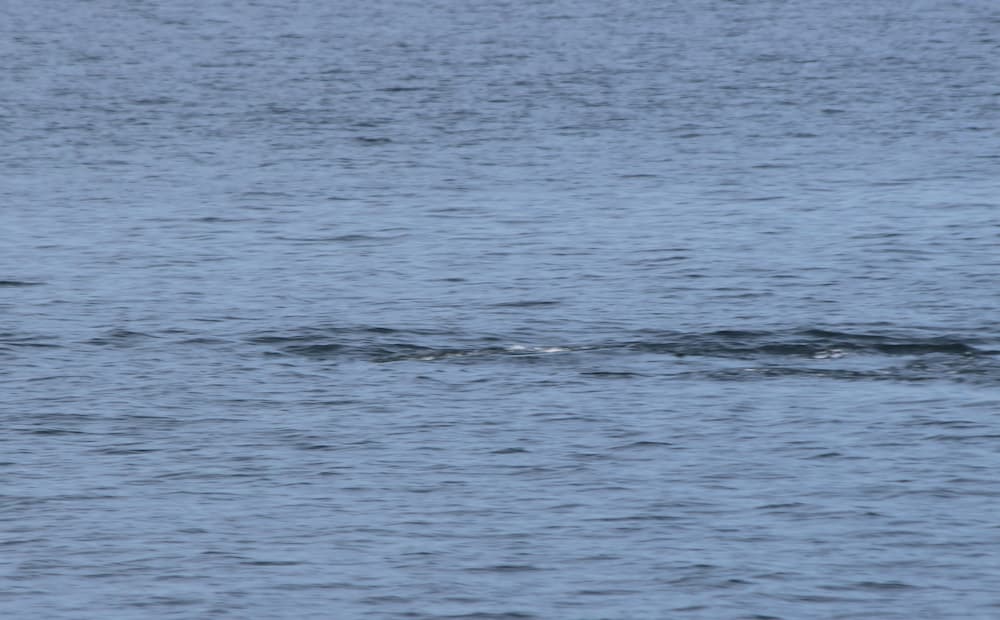
Dive times vary by species, location, and purpose. At Stellwagen Bank, most deep feeding dives for humpbacks last four to six minutes. Look for slick round patches on the water’s surface --“footprints”-- that rise to the surface from the force of the whale’s tail as it dives.
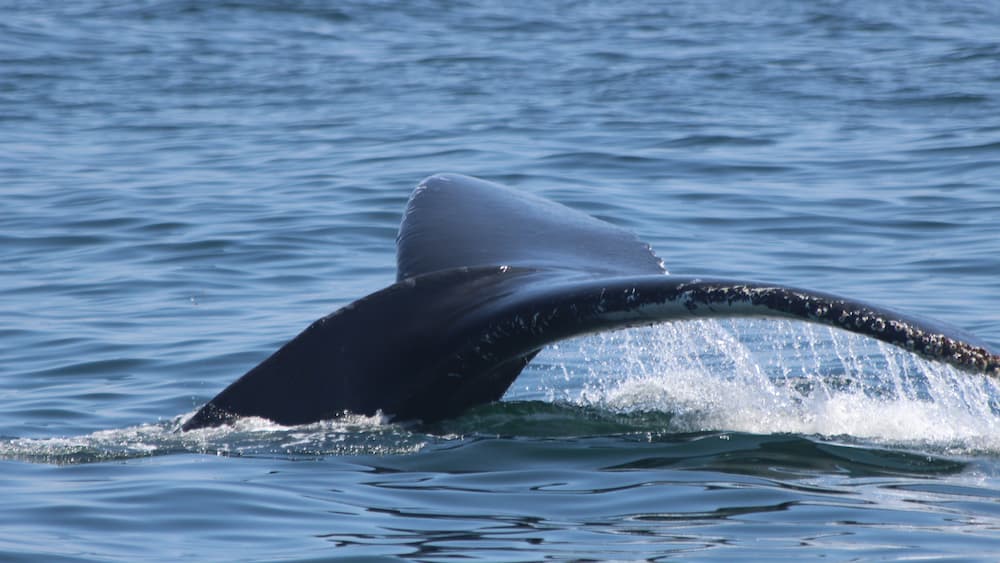
When a humpback whale dives, it usually shows its tail (which is composed of two flukes or “wing-like” sections). When humpbacks make shallow dives, you see the top (dorsal) surface of the tail as the whale slides underwater.
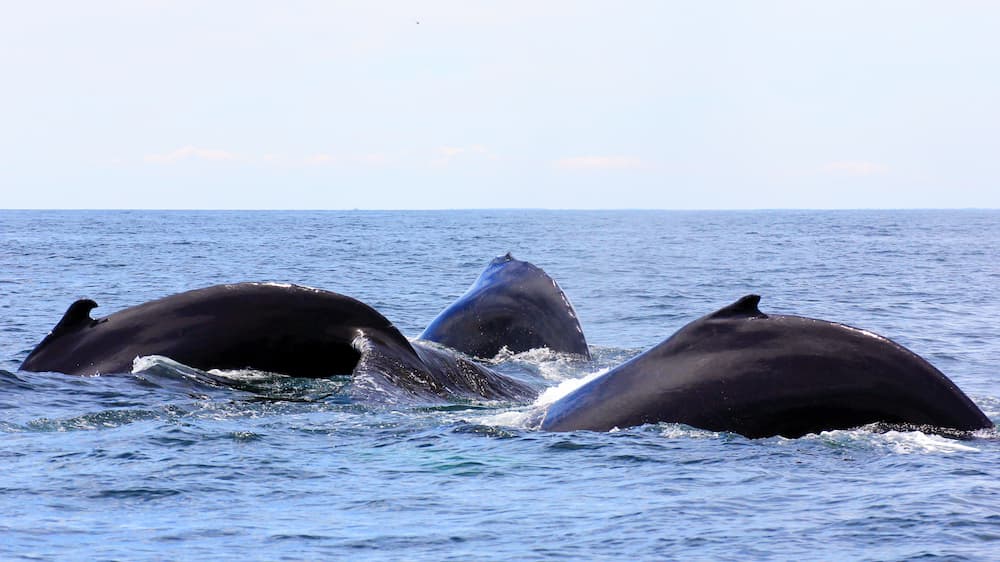
During most dives, a whale will curve its body, such that its upper back and dorsal fin are visible before the animal submerges.
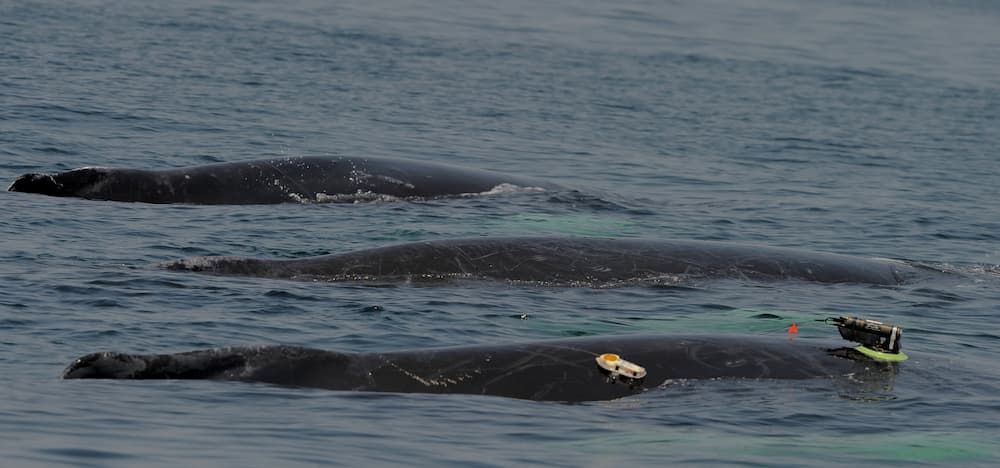
When a whale lies quietly at the surface, it is said to be logging. Whales are voluntary breathers and cannot sleep as we do. Scientists believe they rest part of their brains through logging while the active portion of their brain keeps them aware of the environment.
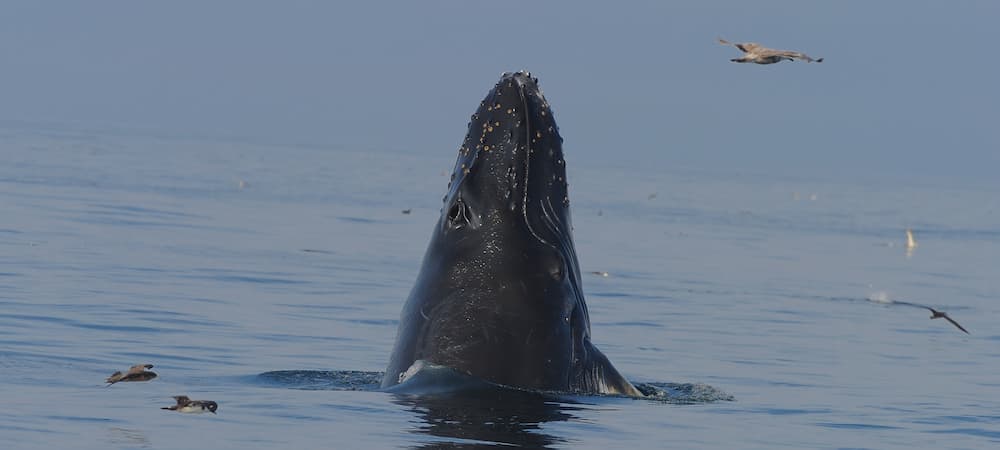
When a whale positions itself vertically or at an angle, with its head and even its eyes rising out of the water, the animal is said to be spyhopping. The animal may turn 90-180 degrees around before slipping back underwater.
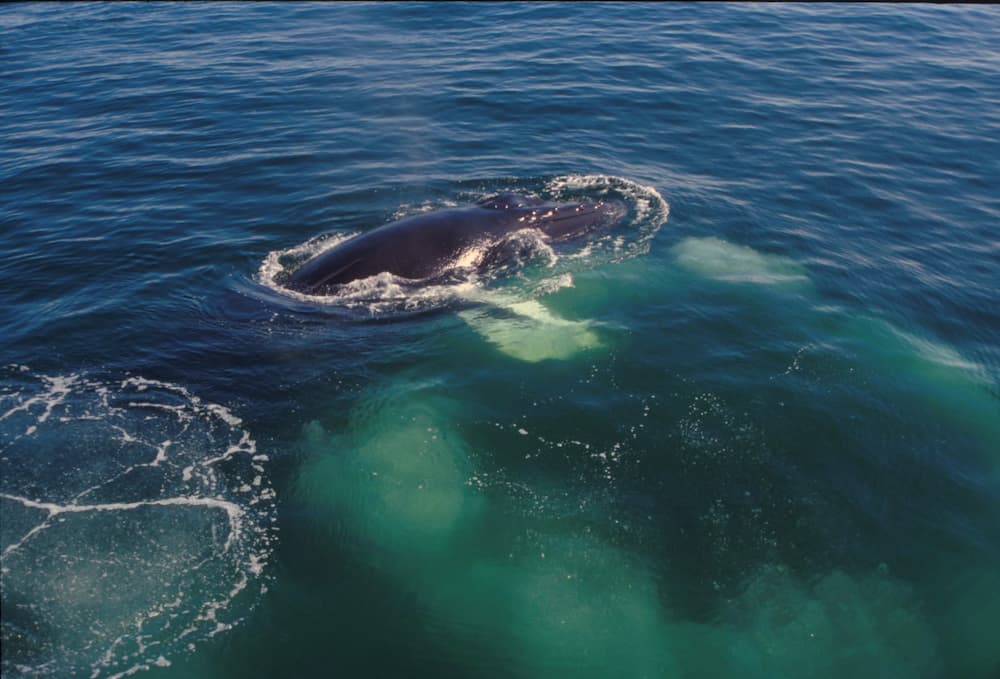
Humpback whales release bubbles in precise circular “nets” or amorphous “clouds.” These bubbles cause schooling fish to clump together for easier capture by feeding whales.
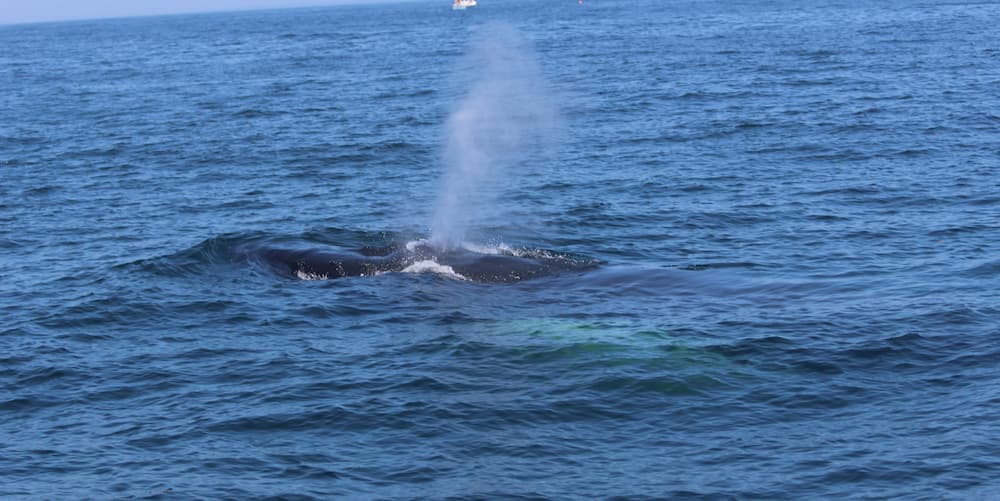
A spout (or blow) is the cloud of air and condensed water vapor that forms when a whale exhales. A humpback spout is bushy and 10-16 feet high, a right whale has a distinctive V-shaped blow, and a fin whale spout may reach more than 40 feet. Minke whale blows are barely visible.
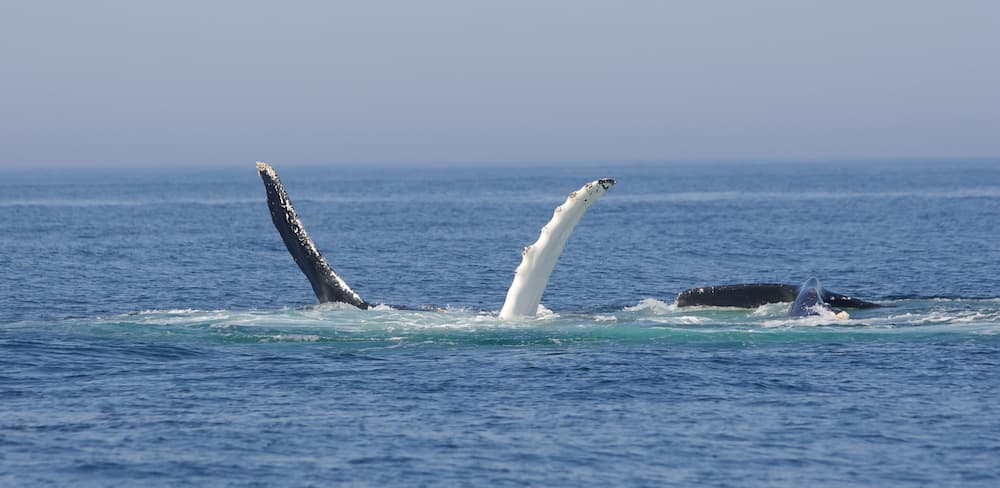
Whales roll onto their sides or backs and slap the water with one or both of their pectoral fins. This may be a way of cooling off or a form of communication.
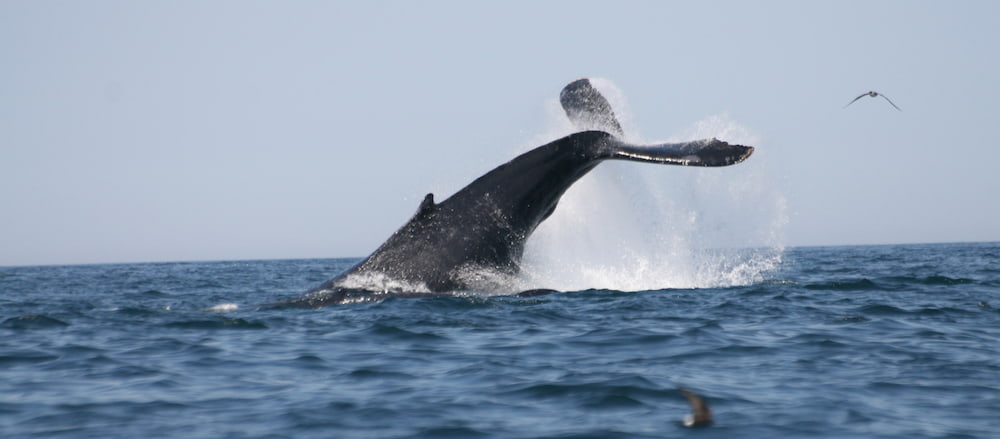
In kickfeeding, a humpback raises the back part of its body and slaps (kicks) the water before quickly descending under a bubble net to capture a school of fish. The shock or sound of the slap may stun or confuse the fish.
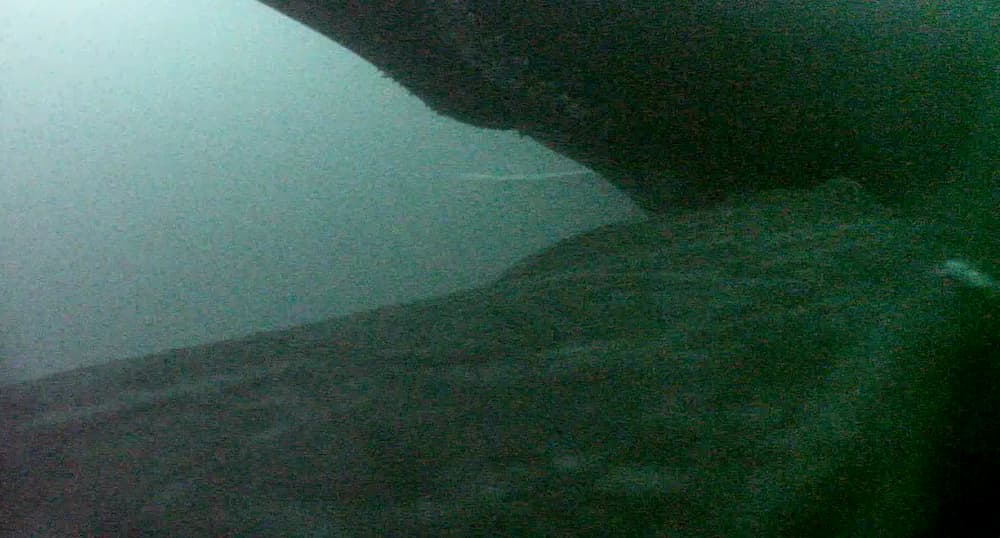
Calf suckles underwater, then surfaces to the mother’s side, slightly behind her dorsal fin.
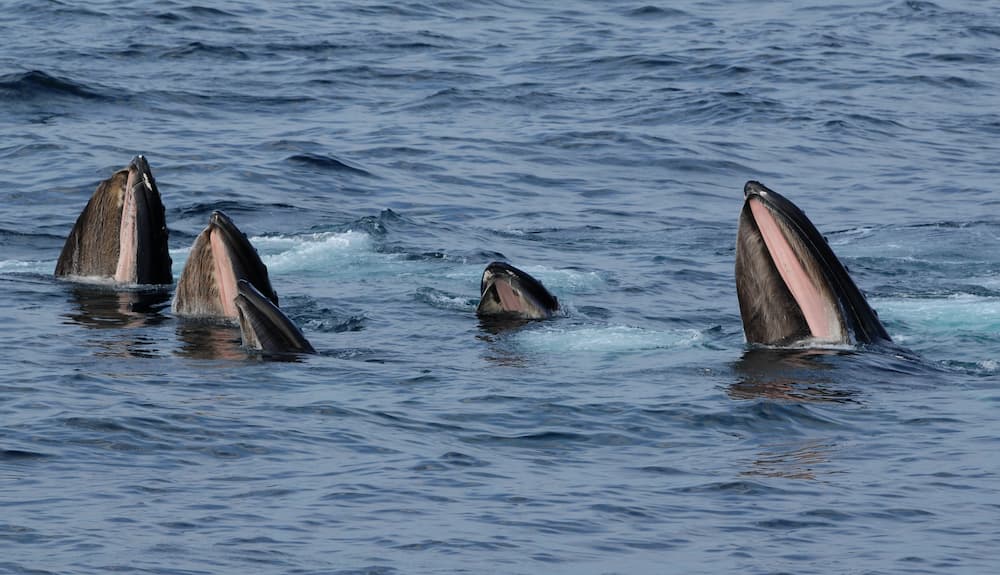
Several whales work together using bubble nets or clouds to capture prey.
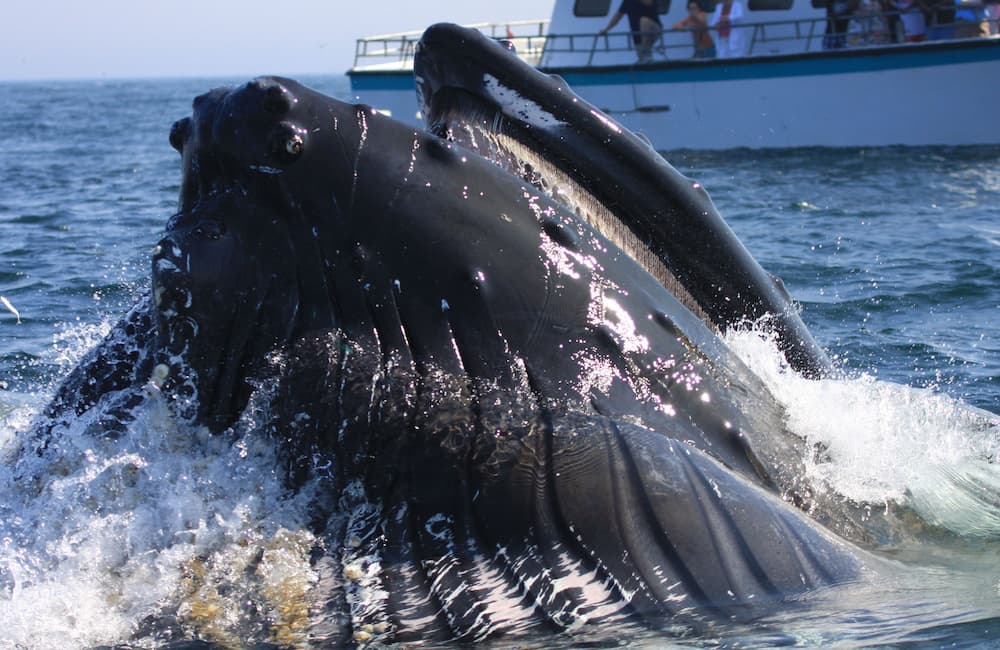
As the whale surfaces, taking a mouthful of fish and water, its throat pleat expands greatly and its mouth is open. It will gradually close its mouth and force out the excess water, keeping the fish tucked behind its baleen plates.
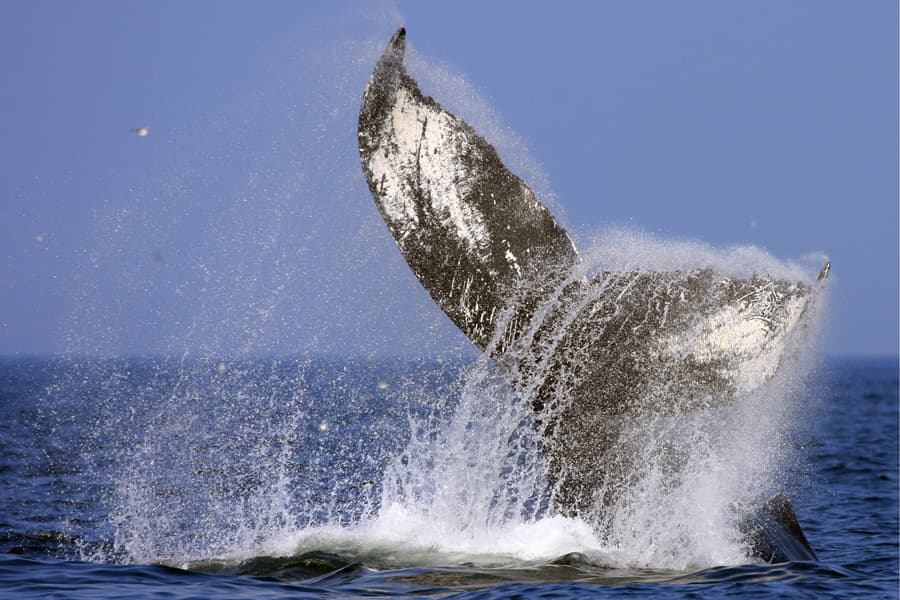
This involves lifting the tail out of the water and then slapping the surface, often quite forcefully in a belly or ventral-down position. If the whale is on its back (dorsal-down), it is called an inverted lobtail. A peduncle slap uses the tail and back portion of the body.
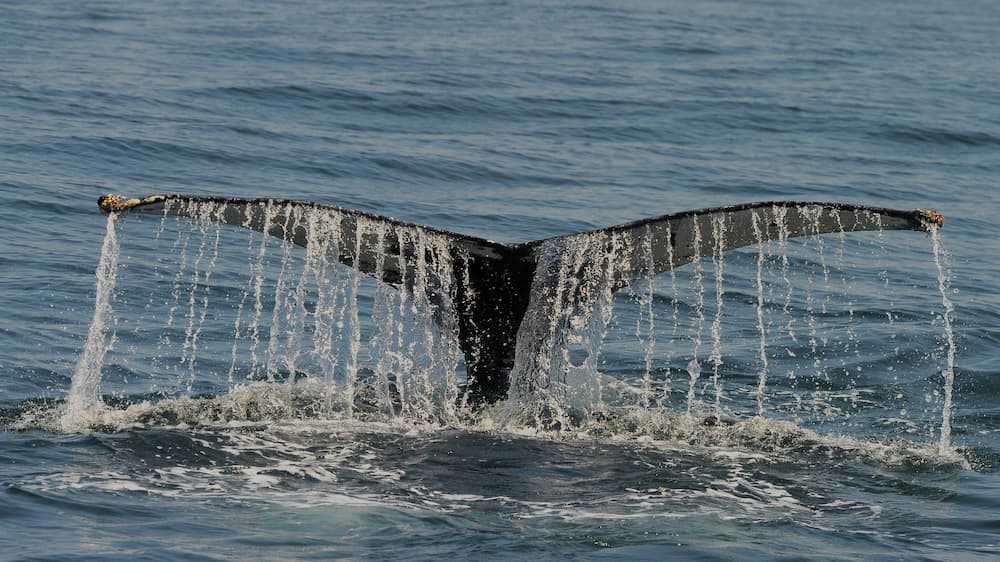
For a deeper dive, the whale will raise its tail in a vertical position, providing a good view of the lower (or ventral) side. Each whale’s unique pigmentation pattern on the underside of the flukes allows for identification. Fin, sei and minke whales rarely raise their tails on any dive.
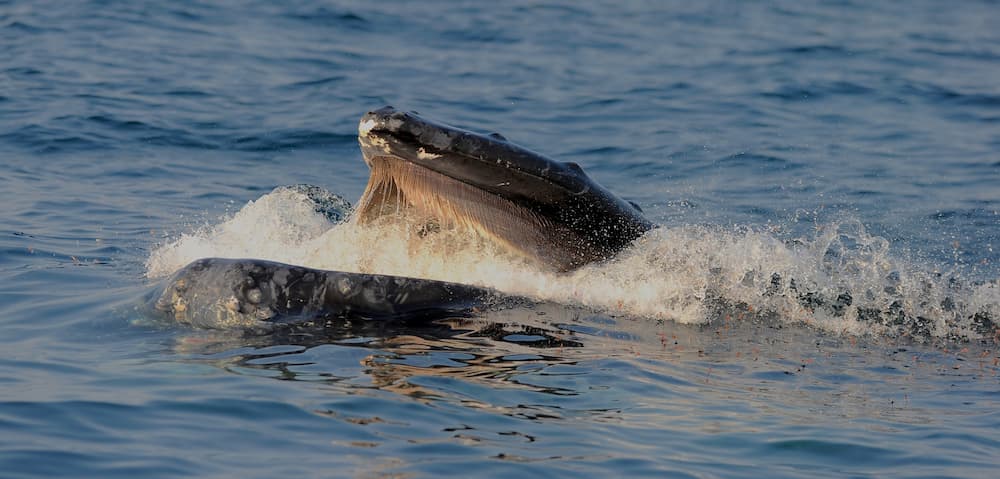
If fish are at or near the surface, a whale may use a quick burst of speed along a straight track with its mouth open to catch its prey. Its head may fully break the surface during this maneuver.
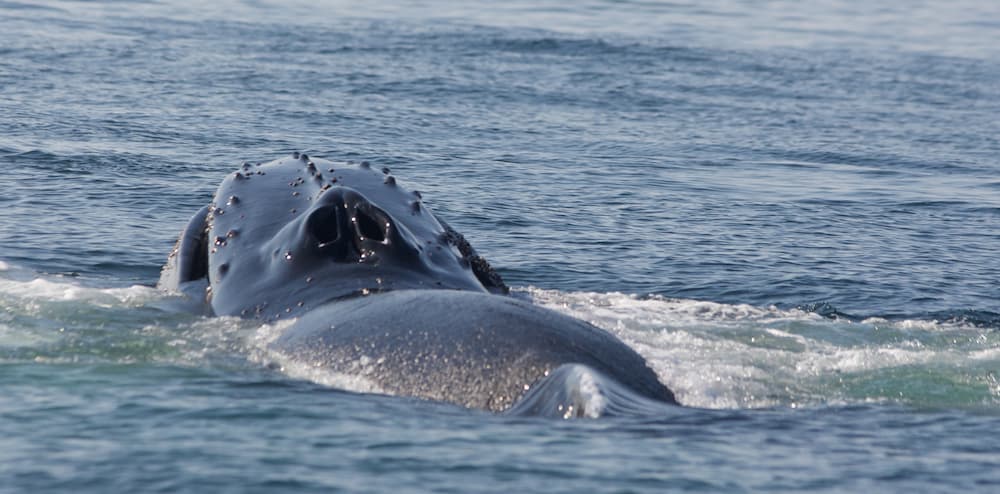
As the whale strains water from its mouth, it moves sinuously, arching its body so the head and lower back are raised.
Whales use sound to communicate with one another. Hydrophones have recorded complex “songs” of male humpback whales, even in the northern feeding grounds, and a variety of sounds from other species.